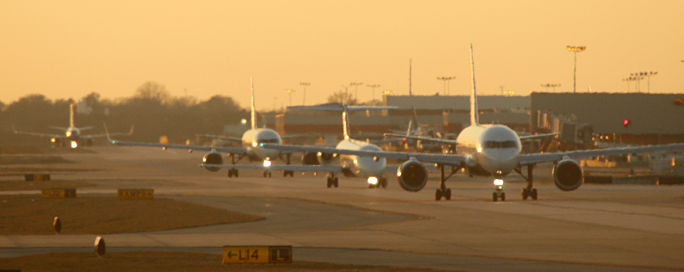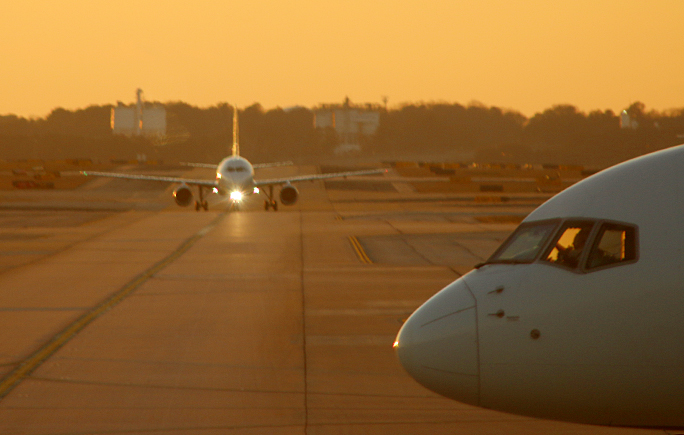For the thirty-fifth time this year, the alarm rouses you out of a deep sleep at 4:00 in the morning to alert you that you need to get ready to catch your flight. Hitting that snooze button is only delaying the inevitable: you need to leave that warm comfortable bed, get dressed, and deal with your commute to the airport — wishing that the airport was not so far away so that you do not need to wake up so early in the morning.
7 Factors You Should Consider About Choosing to Live Near an Airport

“Between work and personal trips we estimate we make about 30-35 commutes annually from our home to our home airport”, according to this article pertaining to whether or not your commute to the airport is a factor in purchasing a home as written by Kyle Stewart of Live and Let’s Fly. “My work trips comprise about 20 of those visits to the airport every year. Considering that I live between 30-60 minutes from the airport depending on traffic, that can be longer than one work week every year fighting traffic just to leave.”
Kyle Stewart misses some points in an otherwise good article which provokes thought on where a person should live when traveling via airplane. His article deals with home ownership, which is usually one of the most significant purchases on which a person decides — but for this article, people who pay rent to live in their homes will be taken into account as well.
Let us start off with the premise that if a person seldom travels via airplane — perhaps no more than a couple of times per year — proximity to the airport is likely not a factor in the decision as to where that person should live; but rather the type of home, quality of the neighborhood, performance of the school district, taxes, and commute to the employer or business are only five of the many factors to consider instead…
…so when does the airport become a factor as to where to decide to live? That question cannot be definitively answered because of myriad factors — and that is the crux of the topic of this article.
1. Noise
Generally, you have a greater possibility of experiencing a constant cacophony of noise when you live closer to an airport — especially if your home is near an active flight path.
At a major international airport, the noise may very well be constant as airplane after airplane fly overhead — either taking off from the airport or landing at it — whereas at a regional airport, the noise may be sporadic at best from a regional jet aircraft or a propellor airplane.
Major international airports are in operation 24 hours per day, creating undesirable noise, lights and traffic — even when no flights are operating during the overnight hours due to sound abatement restrictions.
Often, people who live near airports get so used to the noise that they do not even notice it — unless they are specifically trying to hear something.
2. Spotting Airplanes
Noise aside, living near or under an active flight path of a major international airport offers opportunities of spotting many different models of airplanes operated by a plethora of airlines from all over the world. You might even see an airline which you may not recognize. This can be a dream which can occupy an aviation enthusiast for hours on end.
The appearance of an occasional small aircraft can be about the best it gets when living near a regional airport.
3. Environment
Expansive parking lots which are brightly illuminated, massive warehouses, and tanks for the storage of jet fuel are some of the unsightly necessities of living near a major international airport.
Living near a regional airport usually is not nearly as unsightly.
4. Getting To the Airport
Because major international airports serve greater metropolitan areas which include at least one large city, frequent fliers who commute regularly to an airport will encounter traffic — especially during rush hours — no matter how many roads and highways access them…
…but then again, major international airports usually offer other options for you to get there — such as train service, buses and other mass transportation options; shuttle services; and ride sharing services such as Uber and Lyft. All of them also offer frequent schedules of service.
You may not usually encounter heavy traffic when getting to a smaller regional airport — but you will have fewer options in terms of roads and highways, which may be narrower and not necessarily be faster. Your other transportation options will certainly be fewer and at less frequent schedules. For example, you may still have access to at least one ride sharing service; but it may have fewer drivers and therefore less frequency.
5. Flight Schedules
A major international airport will obviously have more frequent and more convenient schedules of flights throughout the day than a smaller regional airport — and therefore more choices…
…but the commute will be longer for the aforementioned reasons of traffic and fewer transportation options — right?
Not necessarily. Although getting to a smaller regional airport in minutes sounds appealing, are you only extending your commute by taking an extra flight to a major international airport so that you can switch to a second flight?
6. Choice of Airlines
Despite the hub and spoke systems of airlines where one may operate the majority of flights at a major international airport which is its hub, travelers still have a choice of airlines.
Some regional airports are so small that only one airline serves it.
7. Amenities
Amenities offered at major international airports versus smaller regional airports can vary. Lounges, a plethora of dining options, and express services for elite members of frequent travel loyalty programs and members of trusted traveler programs — such as Global Entry, for example — are typically offered at major international airports…
…but smaller regional airports offer parking at a reduced cost or even free of charge, shorter lines, and a more comfortable and relaxing experience.
Summary

I lived fewer than 15 minutes from John F. Kennedy International Airport in New York, with LaGuardia Airport as few as 25 minutes away. When I was based in another location, I lived fewer than 30 minutes from Newark International Airport. I am currently based as few as 35 minutes from the international airport which serves the greater Atlanta metropolitan area.
All of those times do not include traffic, of course. Each had its own advantages and disadvantages for me.
The point is that too many other reasons should have a priority as to where you should live over whether or not you should live near an airport — not that that should not be a consideration — and each of those reasons are highly subjective to every different person. Living near an airport does mean a shorter commute, which could save many hours over a year for a frequent flier…
…but there are other reasons which could be trade-offs that could actually negate the reason for moving near an airport — regardless of whether it is a major international airport or a small regional airport.
All photographs ©2015 by Brian Cohen.

